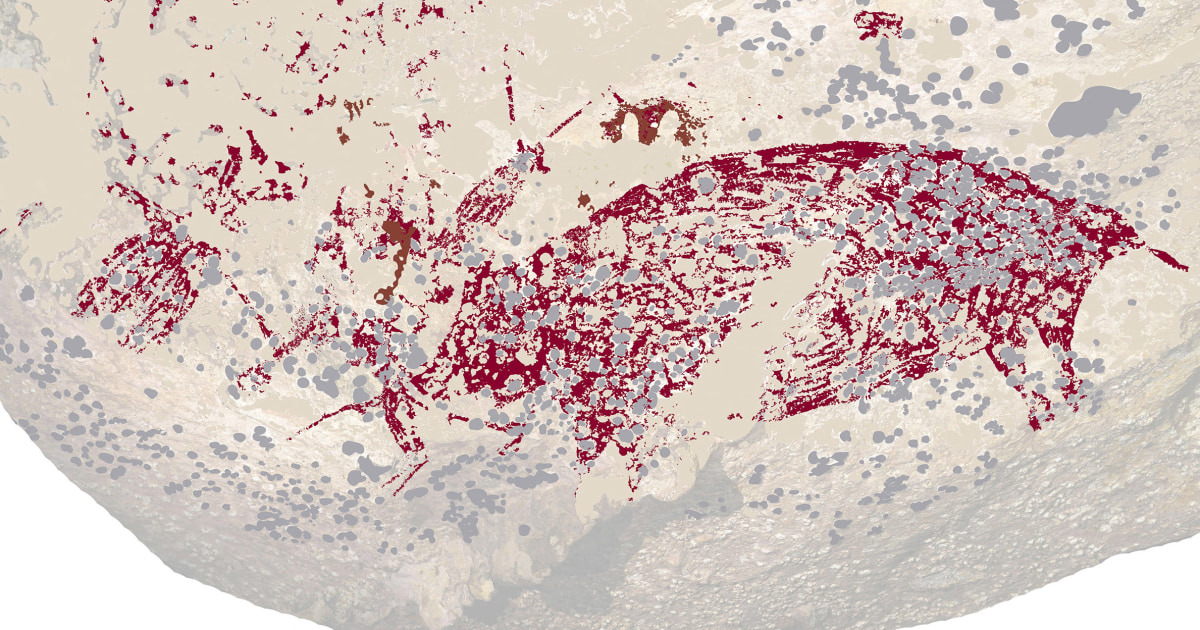World
World’s oldest cave painting is at least 51,200 years old, scientists say

A cave painting in Indonesia is the oldest such artwork in the world, dating back at least 51,200 years, according to an international team of researchers who say its narrative scene also makes it the world’s oldest known evidence of storytelling in art.
While it is unclear exactly what the painting depicts, it most likely shows three small human-bird hybrids surrounding a massive wild pig “which they were probably hunting,” said Renaud Joannes-Boyau, co-author of the study published Wednesday in the journal Nature.
It’s that storytelling that has captivated scientists.
“That is something new, something very important, something that happened much older than we thought,” said Joannes-Boyau, who is also a professor at Southern Cross University in Lismore, Australia.
Samples of the painting were taken in 2017 from the Leang Karampuang cave on the island of Sulawesi in eastern Indonesia.
But it was not until now that a team of Indonesian and Australian researchers deployed a new dating technique that found the painting was thousands of years older than the previous record holder, which is also located on Sulawesi in another cave about 6 miles away.
“Representation of human figures is already extremely rare,” Joannes-Boyau said. “But storytelling of 51,200 years old is even more incredible.”
Among the hundreds of caves on Sulawesi are some of the world’s oldest cave paintings. The unique preservation capabilities of the island, which is home to 20 million people, lie in its weather and topography, scientists say.
The previous record holder, also a painting of a wild pig depicting a narrative scene, was created at least 45,500 years ago and was found in a cave called Leang Tedongnge.
As water flows across the walls of caves, it deposits a layer of a mineral called calcite. The layers of calcite not only protect the paintings but can also be used to determine their age.
But the layers are usually uneven, often resembling popcorn, Joannes-Boyau said, making it difficult to use previous dating techniques that involve extracting a sample and averaging the age of all layers.
“You get bumps. You have places where you have more calcites and places where you have less calcites,” he said. “That makes it very complicated to date.”
This time, the team deployed a uranium-based dating technique in which a laser beam one-third the size of a human hair is shined on a much smaller sample of the calcite.
“We can calculate ages on the layer that is really against the paint,” Joannes-Boyau said.
The new method is not only more efficient but also much more accurate and causes less damage to the original artifact, the researchers said in the study. Scientists used the same technique to reassess the age of another painting from Sulawesi, revising its age to be at least 48,000 years old, 4,000 years older than originally thought.
“It opens a lot of possibilities,” Joannes-Boyau said.
It also raises new questions about what human ancestors were capable of thousands of years ago. While the painting’s true purpose and meaning remain a mystery, he said clues might be found from its location, in a cave that was not easily accessible.
“They were not common living spaces. This is actually a place where you have to go for a purpose and is probably linked to some sort of a ceremony,” he said.
The discovery was a “very humbling moment” for the researchers, he said, adding, “It’s the story of humanity as a group.”
“It’s not about our differences, it’s about all of us being on that scene,” he said.










